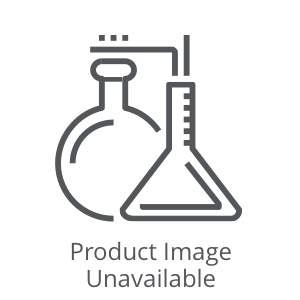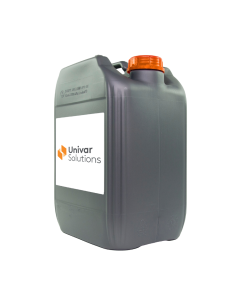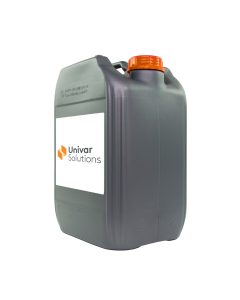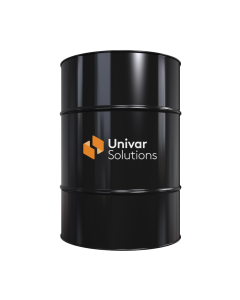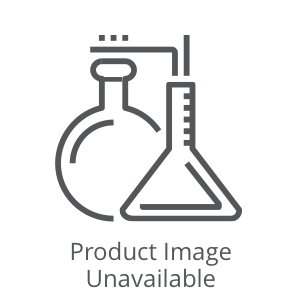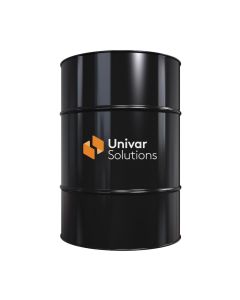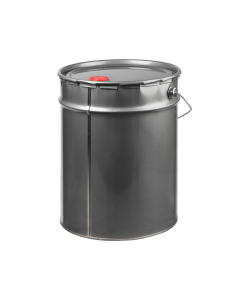We’re here to provide you with more information or help answer any questions you might have. Send us a note and we’ll get back to you as soon as possible.



EarthOil by Univar Solutions offers a wide range of virgin vegetable oils. Most of the time they are produced by cold pressing to preserve their quality. Some of them are fair trade certified. EarthOil range also includes organic vegetable oils.
Apricot Kernel
THE GOLDEN APPLES OF GREEK MYTHOLOGY
The Apricot tree, Prunus armeniaca, is part of the Rosaceae family. During Ancient Times it was cultivated in Armenia where its wood was used to create carvings. In fact, it was at one point believed to have originated there due to its Latin name which means “Armenian plum”. Other historical sources cite India as its origin. However, its true origin is that of China where the word Apricot is defined as "education circle" in the Chinese dictionary.
The connection to schooling stems from the contribution of Confucius, who was a Chinese philosopher and teacher. It is said that he gathered his students in a “private school” under an apricot tree, where he would deliver tutorial sessions that were affordable compared to the expensive institutes.
Apricot and almond are part of the prunus family. Both are comparable so much so that the Italian liqueur Amaretto is flavoured with extracts of apricot kernels, and not actually from the seeds of almond.
Used in sweet or savoury dishes and drinks in culinary applications, the fruit is still very popular in both its fresh and dry form, while the oil is valued as a cosmetic ingredient.
OUR GRADES OF APRICOT KERNEL OIL
- Apricot Kernel Oil Crude
- Apricot Kernel Oil Crude (Organic)
- INCI: Prunus armeniaca Kernel Oil
USES AND BENEFITS OF APRICOT KERNEL OIL
Apricot Kernel Oil is a light-yellow oil, relatively dry, with a low odor profile. Fluidic and spreadable, not sticky or greasy, it is used as an emollient and suitable for every type of skin.
It contains lower saturated fatty acids compared to other vegetable oils and high levels of both omega 9 (Oleic Acid) and omega 6 (Linoleic Acid), which are unsaturated fatty acids. They impart softness and promote the skin elasticity. Naturally high in Vitamin E and A, the oil exhibits an enhanced stability to oxidation and radiance to the skin.
| Fatty acid | Typical value |
| C16 Palmitic Acid | 3-10% |
| C18 Stearic Acid | Max 4% |
| C18:1 Oleic Acid | 50-76% |
| C18:2 Linoleic Acid | 19-33% |
Apricot Kernel Oil is a balanced, intermediate oil and an excellent base for massage oils or for blends of essential oils. It is comparable to Almond Oil and can be used as a substitute.


HOW THE OIL IS PRODUCED
The oil is extracted via cold pressing, which involves placing the oil-rich kernels of the fruits between two rotating metal plates to apply extreme mechanical pressure that will cause them to break and release their oils. Apricot kernels have an oil content of approximately 40-50%.
The resultant crude oil has a yellowish colour with a slightly sweet, nutty scent.
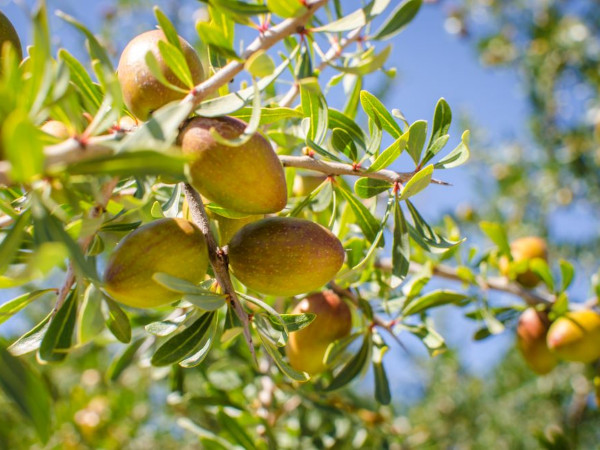

HOW THE OIL IS PRODUCED
Once the argan fruit has been collected, the soft pulp is removed by hand, the most labour-intensive part of the process. The pulp is used as animal feed.
The hard nuts are then cracked between two stones by hand and the seeds removed. This traditional process has been handed down to the women, generation after generation. The Argan kernels are then cold pressed in a stainless steel press and decanted. After 1-2 weeks the oil is filtered to produce a clear and bright top quality product.
Argan
NATIVE FROM MOROCCO, USED FOR CENTURIES
Inscribed on the Representative List of the Intangible Cultural Heritage of Humanity by the UNESCO, the argan tree is an endemic woodland species mainly found in the Agadir region of Morocco and in Algeria. With approximately 21 million trees, it is believed to be the second most abundant tree of the Moroccan forest. It is incredibly adapted to survive in some of the harsh conditions of the desert. Despite minimal rainfall every year, the tree has a life span of approximately 125 to more than 200 years.
The argan tree forms an integral part of the life of the native tribe the Berbers who have lived there for hundreds of years. The history of the tree is intertwined in their culture, and it became known to them as "The Tree Of Life" due to the fact that they use every part of the tree to supply their population; from sources of building materials to firewood and to a source of food. Traditionally, they roasted the kernels first. They then crushed them into a paste and left that to rest so that the oil could separate from the water and subsequently be collected. Nothing goes to waste, the remaining residue which is a thick chocolate coloured paste that the Berbers called ’amlou’, is used as a dip for bread and forms part of their staple diet.
OUR GRADES OF ARGAN OIL
- Argan Oil Crude (Organic)
- Argan Oil Crude (Fair For Life, Organic)
- INCI: Argania spinosa Kernel Oil
OUR FAIR FOR LIFE ARGAN OIL
Our Fair For Life certified Argan Oil is produced by a group of 600 women in the Indouzal mountain, at the heart of the Moroccan Anti-Atlas range.
Each year, women are asked to communicate their ideas /needs about the use of last year Fair trade fund. A meeting is organized to discuss the different proposals and vote the most necessary in order of priority. So far, the Fair Trade Premium has been used in the following activities:
- Schooling
- Creation of nurseries
- Literacy classes for women
- Creation of wells and water supply
- Weaving centres
- Creation and repair of roads
- Participation in water connection projects (9 villages)making it possible to supply more than 90 families with running water.
USES AND BENEFITS OF ARGAN OIL
Argan oil has numerous cosmetic properties which can be used for a variety of formulations. Traditionally used as a treatment for skin conditions and as a cosmetic oil for skin and hair, Argan oil has become increasingly popular.
Thanks to its excellent nourishing and regenerating properties, it is a valuable skin moisturizer and revitalizer. It is also useful for hair care with its strengthening and shine benefits and very effective in nail care products. Cosmetic companies have been introducing it into their new products because of its many uses and unique provenance.
Argan oil is rich in in unsaponifiable matter like tocopherol (antioxidants) as well as unsaturated fatty acids and essential fatty acids, with well over 70% oleic acid (omega 9) and linoleic acid (omega 6).
| Fatty acid | Typical value |
| C18:1 Oleic Acid | 43-50% |
| C18:2 Linoleic Acid | 29-37% |
| C16 Palmitic Acid | 10-15% |
Avocado
AVOCADO, THE 'BUTTER OF THE FOREST'
Avocado (Persea Gratissima) trees grow to 10–20 meters high and bear large, pear-shaped fruits that have a green, fleshy body and a leathery green or blackish skin, a large stony seed, and a greenish-yellow edible pulp. The avocado was first grown in Mexico approximately 9,000 years ago. The Aztecs named the avocado ahuacatl, which means “butter of the forest,” because of its high-fat and nutrient-dense properties.
In contrast to most other vegetable oils, Avocado Oil comes from the flesh instead of the stone of the fruit and was therefore one of the easiest oils to extract by the early civilizations.
EarthOil’s Avocado Oil comes from the Mount Kenya and Thika regions of the Kenyan Highlands, where hundreds of small-scale farmers, grow avocado trees. Each farmer has between 1 and 50 acres of avocado trees, predominantly the Fuerte variety, with each tree producing 250 to 600 kg of fruit per year depending on the age of the tree. Field officers work with these farmers to ensure that organic practices are followed. Many more farmers are eager to bring their farms to organic status so that they too can enjoy the same benefits as their neighbours.
OUR GRADES OF AVOCADO OIL
- Avocado Oil Crude (Fair For Life, Organic)
- Avocado Oil Crude (Organic)
- Avocado Oil Refined (Fair For Life, Organic)
- Avocado Oil Refined (Organic)
- INCI: Persea gratissima Oil
OUR FAIR FOR LIFE AVOCADO OIL
For the Fair For Life grade, in addition to other benefits of Fair For Life certification, the farmers and workers receive a fair trade development fund/premium which has been used so far in providing support for farmers meetings and organisation, purchasing organic inputs, support on welfare costs and buying face masks and sanitiser. There are more projects planned which will be implemented as the farmers receive more premium from the fair trade avocado sales.
USES AND BENEFITS OF AVOCADO OIL
Considered as one of the most suitable and effective cosmetic oils, Avocado Oil is used as a base product in many skin and hair care preparations. Recommended for dry, mature or damaged skin, it is commonly used in formulas such as creams, lotions, body butters, sun care products, hair oils or lip balms.
Viscous yet very spreadable, heavy yet nourishing, Avocado Oil is excellent for protecting the skin from moisture loss. It was characterized in our sensory profile study of vegetable oils.
Avocado Oil is more easily absorbed by the skin than many other cosmetic oils. Indeed, this is partly due to its content of palmitoleic acid, which is relatively rare in vegetable oils. Avocado Oil reveals a very high monounsaturated fatty acid level, indicating its high content of omega 7 (C16:1 Palmitoleic Acid) and omega 9 (C18:1 Oleic Acid).
| Fatty acid | Typical value |
| C16 Palmitic Acid | 10-30% |
| C16:1 Palmitoleic Acid | 2-12% |
| C18 Stearic Acid | Maximum 3 |
| C18:1 Oleic Acid | 40-75% |
| C18:2 Linoleic Acid | 2-20% |
This oil is also appreciated for its rich unsaponifiable fraction (3-10%) that contains sterols, phytosterols and different vitamins such as tocopherols or carotenoids.


HOW THE OIL IS PRODUCED
The mature avocados are picked from the trees between April and September and brought to the processing facility where they are placed in a cold room at 6°C–8°C so the fruits can ripen. They are then washed, deskinned and destoned before the flesh is crushed to a paste. The oil is then stored in tanks for six to eight weeks to allow the waxes to settle.


HOW THE OIL IS PRODUCED
Because baobabs are not yet a commercially grown crop, they are hand harvested in more remote regions and then collected by rural collection groups. These collection groups work in the forests collecting the large seed pods and then remove the seeds from the "cream of tartar-style" pulp that surrounds the seeds. This filling is high in vitamin C and is a popular treat in East African markets. EarthOil by Univar Solutions supply partner cold presses the hard seed at its processing facility to produce a golden oil.
Boabob
BAOBAB, THE 'UPSIDE-DOWN' TREE
Adansonia digitata is a deciduous tree that can live more than a thousands of years, growing up to more than 20 meters high and 7 meters in diameter. Baobab, as it is more commonly known, can be traced back to the Egyptians, where inscriptions on bark have been found and identified. Baobab trees are native to Africa, Madagascar and Australia, and are often referred to as the "upside down tree" because its branches look like roots sticking up into the air. In Africa, every part of the baobab tree is sustainably used for food and medicinal applications — from the leaves to the roots — and as such it is often referred to as ‘the tree of life’. The tree enjoys a huge folklore covering almost all of Africa. In West Africa, spirits are believed to inhabit the flowers and locals believe a lion will devour anyone rash enough to pluck a flower. In Tanzania it is considered dangerous to suck a seed of the baobab in crocodile country (because doing so is believed to attract crocodiles), while in Zambia, washing seeds in rivers offers protection against crocodiles. Another belief is that drinking an infusion of the bark will make you mighty and strong. In southern Nigeria the baobab tree is worshipped as a fertility symbol, and people still marry beneath its branches. The fruit of the baobab tree is large and quite heavy with a velvety shell. It can be up to 18 cm long, approximately the size of a coconut. Its many seeds are found around a vitamin-rich pulp. The pulp has a long history as a food source and has been used to treat a number of medical conditions in Africa. The leaves too are used as a vegetable and the seeds are roasted and eaten. The seeds can also be ground up to release the seed oil and are used as an edible vegetable oil. This oil has been used traditionally by African women for centuries to protect their skin and hair against the harsh African climate. EarthOil has been sourcing baobab oil for more than 10 years, originally sourcing the seeds from the Zambezi valley but more recently from the coastal plains, and also from South Africa where the seeds are sourced organically.
OUR GRADES OF BAOBAB OIL
- Baobab Oil (Organic)
- Baobab Oil Crude
- Baobab Oil Refined
- INCI: Adansonia Digitata Seed Oil
USES AND BENEFITS OF BAOBAB OIL
Baobab oil is high in vitamin C and contains omega 3, omega 6 and omega 9 fatty acids. Its high composition in unsaturated fatty acids would normally lead to susceptibility to oxidation. But this balanced oil is relatively stable, thanks to the presence of natural antioxidants and palmitic acid, a saturated fatty acid. The oil is known for its strong moisturizing properties for both skin and hair thanks to its omega 6 content and is reputed to help skin elasticity. Fluid, very spreadable, it is well absorbed by the skin after application, without leaving any sticky or greasy after-feel.
Borage
BEAUTIFUL BLOSSOM REMINISCENT OF TWINKLING STARS
Borage, whose botanical name is Borago officinalis, is an annual herb of the Boraginaceae family. Also known as “Starflower” thanks to its five blue petals, Borage is a wild-growing robust plant native of the Mediterranean region, that was later cultivated and naturalised in colder climates such as in Great Britain and in North America. It blooms from early spring right through to the frost.
Traditionally associated with courage, the English word "borage" is said to be derived from the Celtic word “borrach”, that translates to “a person of courage”. In Ancient Times, the Greeks and Romans used Borage to flavour the wine that was served to the soldiers preparing for battles. In folklore traditions throughout its long history of recorded use, borage was thought to be able to dispel melancholy and sadness. In the garden, borage flowers attract beneficial insects like pollinators, making it a good partner for nearby plants.
In contrast to Borage's centuries of use as a herb, Borage Oil has only been used in the last couple of decades.
OUR GRADES OF BORAGE OIL
- Borage Oil Crude (Organic)
- Borage Oil Refined (Organic)
- INCI: Borago officinalis Seed Oil
USES AND BENEFITS OF BORAGE OIL
Borage Oil is used in skin care and hair care products for its regenerative and protective qualities.
It is rich in polyunsaturated fatty acids, including omega 6 essential fatty acids (Linoleic Acid and its derivative, Gamma-Linolenic Acid). It is known to contain one of the highest amount of Gamma-Linolenic Acid compared to other seed oils. That allows this oil to soften and promote the skin elasticity and to restore its hydrolipidic film.
| Fatty Acid | Typical Value |
| C16 Palmitic Acid | 6-13% |
| C18 Stearic Acid | 2-6% |
| C18:1 Oleic acid | 10-22% |
| C18:2 Linoleic acid | 25-45% |
| C18:3 Gamma-Linolenic acid | Min 18% |
Borage Oil is especially suitable for dry, mature or devitalized skins.


HOW THE OIL IS PRODUCED
Because baobabs are not yet a commercially grown crop, they are hand harvested in more remote regions and then collected by rural collection groups. These collection groups work in the forests collecting the large seed pods and then remove the seeds from the "cream of tartar-style" pulp that surrounds the seeds. This filling is high in vitamin C and is a popular treat in East African markets. EarthOil by Univar Solutions supply partner cold presses the hard seed at its processing facility to produce a golden oil.


HOW THE OIL IS PRODUCED
Only a single species of this plant is used for our oil, obtained from the nut of the Calophyllum inophyllum. The tree grows naturally and the fruit is harvested manually throughout the year. Once the fruit is collected, they are broken in half to obtain the nut inside. The nuts are then sun-dried, grinded and pressed for oil extraction. The oil is then filtered through paper before being delivered.
To ensure the quality and purity of the Calophyllum Oil, the fruits are collected by trained farmers who do not use chemicals on their crops. As there is no other production in the processing unit, the tools are dedicated to organic oil and cleaned before each use.
1000 kg of nuts lead to 100 kg of Calophyllum Oil.
Calophyllum
EXPLORE THE WONDER OF CALOPHYLLUM OIL
Calophyllum Oil, more widely known as Tamanu Oil, can be found in the fruit of the laurelwood tree. Calophyllum translates to “beautiful leaf” in Greek: kalos means beautiful, phullon means leaf. Native to the South Pacific islands, this pantropical tree has a variety of uses through its bark, leaves and fruit. This tree has been used medicinally for centuries by various Asian, African and Pacific Island cultures. In the purest form, Tamanu Oil has a thick consistency, a dark green color and an earthy scent.
OUR GRADES OF CALOPHYLLUM OIL
- Calophyllum Oil Green Crude (Organic)
- Calophyllum Oil Yellow Crude (Organic)
- INCI: Calophyllum inophyllum Seed Oil
USES AND BENEFITS OF CALOPHYLLUM OIL
Tamanu oil is extracted from the fruit of the nut and can be used for benefits such as superior moisturization, anti-inflammatory conditions and regenerative properties. This oil is rich in antioxidants, including tocopherols and polyphenols. Tamanu Oil can be used in a variety of skin care applications such as lotions, serums oils and moisturizers.
C18:1 Oleic Acid or Omega 9, a mono-unsaturated component, is the main fatty acid of this oil and helps to increase the skins permeability. With the C18:2 Linoleic Acid or Omega 6, it helps to soften and promote the skin elasticity.
| Fatty acid | Typical value |
| C16 Palmitic Acid | 9-16% |
| C18 Stearic Acid | 12-18% |
| C18:1 Oleic Acid | 37-48% |
| C18:2 Linoleic Acid | 20-34% |
Calophyllum Oil is particularly suitable for skin with dryness or imperfections. It is furthermore recommended for anti-aging formulas or massage oils.
Castor
HUGE POTENTIAL: RICH PROPERTIES AND VARIETY OF END-USES
The Castor plant, or Castor Bean plant, is the common name for a wind-pollinated flowering plant, Ricinus communis, of the Euphorbiaceae family. Native to the Mediterranean region as well as the tropical regions of Africa and India, the plant is one of the oldest cultivated crops. Initially, it was considered by some people to be an overrun and unwanted weed; however, the benefits of the oil changed the reputation and future for the plant.
The castor seeds, or beans, are the source of many economically crucial products as it is one of the world’s most important industrial oils, and one of the earliest commercial products. The seeds have been found in Ancient Egyptian tombs dating back to 4000 BC, while the oil from the beans was used in facial oils and in wick lamps for lighting. The same uses were also documented in India as far back as 2000 BC.
Among the most versatile plant oil owing to its unique chemical structure, Castor Oil is useful in a wide range of industries. It can be found in the manufacturing of lubricants because of its high lubricating power, paints, plastics, pharmaceutical products, soaps and other cosmetics.
OUR GRADES OF CASTOR OIL
- Castor Oil Crude COSMOS (Organic)
- INCI: Ricinus communis Seed Oil
USES AND BENEFITS OF CASTOR OIL
Castor Oil is a multi-purpose although not-edible vegetable oil. One of the most viscous vegetable oils, it is characterized by a greasy touch and a high density. This gives the oil a unique texture and ensures excellent dispersion of pigments, ideally suited for make-up formulations where it is used as wetting agent. Due to its viscosity, this oil can be combined with more fluid or dry vegetable oils like almond or olive oil.
Castor Oil is well known as an important source of Ricinoleic Acid, a specific monounsaturated fatty acid. It has an unusual “slowing” texture and high viscosity, which accounts for the unique properties of the oil. Castor Oil contains at least 85% of ricinoleates that acts as a softening agent in hair and skin conditioners. Oleic and Linoleic Acids are the other significant components, although present in small quantities. Castor Oil is therefore often added to cosmetics to promote hydration and nourishment. It is known to be a natural conditioner that strengthens nails, hair and eyelashes.
| Fatty acid | Typical value |
| C16 Palmitic Acid | Max 2,5% |
| C18 Stearic Acid | Max 2,5% |
| C18:1 Oleic Acid | Max 6% |
| C18:1 Ricinoleic Acid | 85-92% |
| C18:2 Linoleic Acid | 2,5-7% |
Very versatile, this oil is commonly used in many different cosmetic applications and galenics.
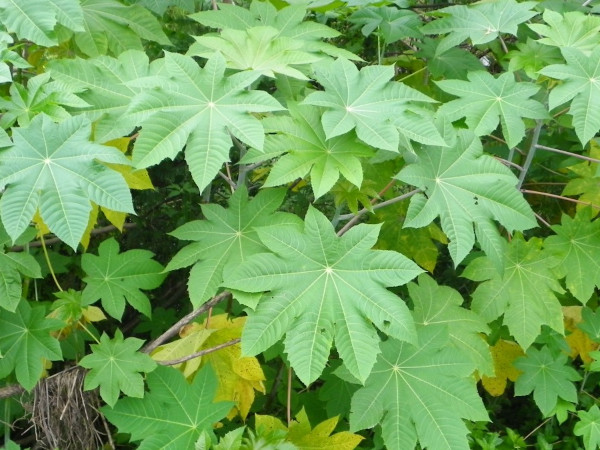

HOW THE OIL IS PRODUCED
The fruit of the Ricinus communis plant is covered with green or red spines depending on the maturity. As it ripens, the shell dries and opens, revealing three seeds rich in oil: they can contain between 40 - 60% oil. Castor Oil is extracted from these seeds, known as castor beans, which naturally contain a toxic enzyme called ricin. Mechanical cold pressing is preferred for this particular oil. During the filtration step the ricin is removed, thus rendering the oil perfectly safe for use. Another option is a heating process that the oil undergoes, which deactivates the enzyme.
Our cold-pressed Castor Oil is viscous, colourless to pale yellow and nearly odourless.


HOW THE OIL IS PRODUCED
Most coconut oil on the market is actually extracted from copra, which is the dried flesh of the coconut, a mass-produced oil that requires huge amounts of energy and produces inherently damaged oil. The crude oil produced this way requires further refining, bleaching, and deodorizing, requiring additional chemicals and large amounts of heat to produce a commercially acceptable product. This process also strips away much of the wonderful fragrance and natural benefits found in coconut oil, meaning the coconut oil produced from copra and virgin coconut oil are two very different products.
Virgin Coconut Oil is produced by expression and subsequent refining of the fresh fruits pulp. First the crop is harvested, then the nuts are collected and taken to the production facilities. There they are cracked open and the white flesh extracted by hand. This flaked flesh is then carefully dried before being passed through a hand-operated hydraulic press to produce a Virgin Coconut Oil. In comparison with the traditional copra process, the production of the virgin oil needs to be extremely rapid. This allows to offer a premium product that preserves the high quality of the oil.
As an additional result of this production process, the aroma “volatiles” are locked in, and the oil retains an authentic, unique coconut odor, giving it a rich and natural fragrance.
Coconut
COCONUT IS NOT A NUT, BUT A FLESHY FRUIT CONTAINING A SEED
Coconut trees are prolific across the tropical and subtropical parts of the globe and their fruits, the coconuts, have been appreciated for thousands of years — as a food source, for the fiber (coir), and for the wood itself. Coconut Oil, which is produced from the coconut flesh, has historical use in food, as fat substance for any savory or sweet dish, for medical applications or as a cosmetic ingredient, both for hair and skin care. It is also one of the component of the famous monoï. Today, it is one of the most well-known vegetable oils in the world.
OUR GRADES OF COCONUT OIL VIRGIN
- Coconut Oil Virgin Crude (Fair For Life, Organic)
- Coconut Oil Virgin Refined (Fair For Life, Organic)
- INCI: Cocos nucifera Oil
OUR FAIR FOR LIFE COCONUT OIL
A base of 1500 Fair For Life certified local farmers together with highly skilled methods of harvesting provide the highest quality of Organic Virgin Coconut Oil. The Farmers are clustered in villages, each with a representative. 20% of the community is led by women who invest an increasingly important role in Kenyan society. The income from the Virgin Coconut Oil crop enables them to pay school fees for their children who would otherwise have no organized schooling. It also provides better housing and access to medical care for their families. Access to continuous learning to improve techniques, technology and skills, as well as an income, increases a sense of independence and self-esteem that energizes the community to evolve and grow. Fair Trade contributions are used to activate learning programs and promote better quality of life. Ones of the undergoing projects are the Coconut Seedlings Program, Workers Welfare and School desks for the community’s children.
USES AND BENEFITS OF COCONUT OIL VIRGIN
White, solid at room temperature, Coconut Oil melts when applied to the skin while spreading very easily. According to our sensory profile study of vegetable oils, its application brings a soft, greasy while non sticky after-feel. It is readily absorbed into the skin, as generations of users can confirm.
The main characteristic of Coconut Oil is the high content of short and medium-sized saturated fatty acids, combined with a very low unsaturated fatty acids content. This makes this emollient stable while offering it a long shelf life. It also contains antioxidants (vitamin A and E), which help protect against free radical formation and consequent damage to the skin.
| Fatty acid | Typical value |
| C8 Caprylic Acid | 4-10% |
| C10 Capric Acid | 5-8% |
| C12 Lauric Acid | 45-53% |
| C14 Myristic Acid | 16-21% |
| C16 Palmitic Acid | 7-10% |
| C18 Stearic Acid | 2-4% |
| C18:1 Oleic Acid | 5-10% |
| C18:2 Linoleic Acid | 1-3% |
Coconut Oil is well known for its deep skin nourishing and softening properties, as well as its hair protection, strengthening and repairing benefits.
Evening Primrose
THE EVENING STAR
Evening Primrose is a flowering plant of the Onagraceae family. It has yellow flowers which open at sunset and close during the day.
Native to North and South America, it became also naturalised throughout Europe and parts of Asia and can be found wild or cultivated for its precious oil. Almost all parts of the plant are edible, including the roots, the leaves, the blossoms or the seeds, that are important food for birds.
The Evening Primrose plant was traditionally used for hundreds of years by Indigenous tribes in North America as a food source and a medicinal crop. It was later introduced to Europe in the early 17th century as an ornamental plant in botanical gardens, without any recognition of its ancient use as a medicine. The oil became a popular folk remedy in Europe, where it was known as the “King’s cure-all”.
Today, the Evening Primrose plant remains a favourite flower in the garden and the oil is mainly known to be used in medicinal supplements and cosmetic applications.
OUR GRADES OF EVENING PRIMROSE OIL
- Evening Primrose Oil Crude (Organic)
- INCI: Oenothera biennis Oil
USES AND BENEFITS OF EVENING PRIMROSE OIL
Evening Primrose Oil is a natural vegetable oil that exhibits a pale yellow to greenish color with a minimum odour. It can be applied directly to the skin and hair or easily incorporated as an ingredient or carrier oil in cosmetic products; from rinse-off to leave-on. It offers ease of spreading, great penetration and significant moisture retention combined with high nourishing properties.
The oil presents a specific fatty acid distribution with a high content in Linoleic Acid and the presence of the rare Gamma-Linolenic Acid (omega-6 family) that softens the skin. Also rich in Vitamin E, this oil is known to help smooth skin and improves its moisture, firmness, and elasticity.
| Fatty acid | Typical value |
| C16 Palmitic Acid | 5-9% |
| C18 Stearic Acid | 1-3% |
| C18:1 Oleic Acid | 5-12% |
| C18:2 Linoleic Acid | 68-78% |
| C18:3 Gamma-Linolenic Acid | 8-13% |
Ideally suited for dry, sensitive and mature skins, Evening Primrose oil is particularly recommended for its skin restructuring benefits.
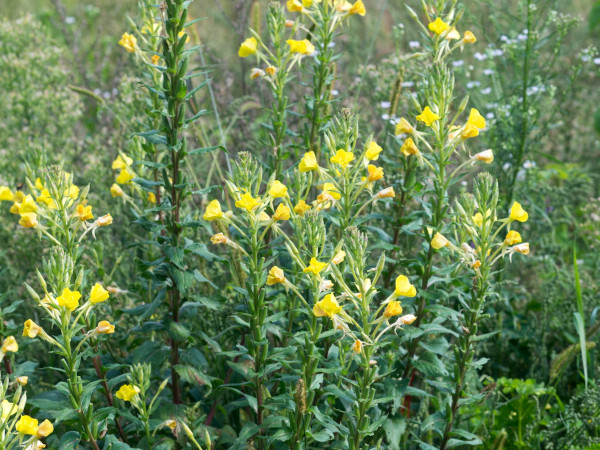

HOW THE OIL IS PRODUCED
Evening Primrose Oil is obtained from the seeds of the herbaceous plant Oenothera biennis thanks to a cold-pressing extraction method. This ensures that the maximum amount of nutrients is retained within the oil. Once the seeds are pressed, the crude oil obtained is filtered before going through a quality control and packed.


HOW THE OIL IS PRODUCED
The area where the grapes are grown in South African are from a very old culture that was planted in the late 1600. The crop is harvested from February to April. This takes place in the early morning when the sugars are perfect. The crops are all hand-picked to ensure the best quality grapes are harvested only. From the seeds of the grapes, a cold pressed extra virgin oil is extracted, that is directly manufactured at the facility of our Grapeseed Oil supplier.
No additional ingredients or inputs are used, the soil is kept healthy thanks to an organic program in place and specialized viticulturists. Moreover, very little water is needed for the crops.
Grapeseed
BY PRODUCT OF THE WINEMAKING INDUSTRY
Throughout history grapes have long been used by humans. They have enjoyed the health and beauty benefits in abundance that this plant has to offer. From simply the delicious taste of a fresh grape plucked from the vine, or a glass of indulgent wine, there is so much more that this ancient fruit has to offer.
Ancient documentation of grape cultivation dates back 6,000 to 8,000 years ago in Georgia, a country at the intersection of Europe and Asia. The oldest documented winery was found to be in Armenia, however other cultures such as the ancient Egyptians, the Greeks, and Romans also documented using grapes in their cultures. While grapes were predominantly used for wine making, the leaves were also known to be used for creating decor and obtaining extracts, and the oil was removed from the seeds.
OUR GRADES OF GRAPESEED OIL
- Grapeseed Oil Crude (Organic)
- Grapeseed Oil Deodorised (Organic)
- INCI: Vitis vinifera Seed Oil
USES AND BENEFITS OF GRAPESEED OIL
Mainly used as an emollient for skin care products, Grapeseed Oil is suitable for many cosmetic applications extending to hair care. It is described as a light, smooth, very fluid and very spreadable oil. It is quick penetrating while delivering a dry skin feel. Thanks to its high content of omega-6 (C18:2 Linoleic Acid), the main fatty acid here, and the presence of omega 9 (C18:1 Oleic Acid), it is claimed to soften and promote the skin elasticity. It also contains unsaponifiables such as tocopherol and some polyphenolic compounds such as flavonoids, well known for their antioxidant properties.
| Fatty acid | Typical value |
| C16 Palmitic Acid | 5-10% |
| C18 Stearic Acid | 2-7% |
| C18:1 Oleic Acid | 12-22% |
| C18:2 Linoleic Acid | 65-85% |
Grapeseed Oil imparts a pleasant flavor and is particularly suitable for mature or oily skins and recommended for massage oils as a carrier.
Jojoba
GOLDEN LIQUID FROM THE DESERT
Derived from the seeds of the evergreen jojoba plant (Simmondsia chinensis), and native to the arid regions of the southwestern corners of the United States and northern Mexico. Jojoba Oil holds a revered place in both indigenous culture and modern skincare. Known as 'Hohowi' by the O'odham tribe and 'Ahamore' by the Seri tribe, the seeds were valued for their many uses, from medicinal remedies to anointment rituals. Jojoba Oil's resilience in harsh climates and its unique composition resembling human sebum make it a staple in the cosmetic industry.
OUR GRADES OF JOJOBA OIL
-
JOJOBA OIL COSMOS (Organic)
-
JOJOBA OIL REFINED
-
JOJOBA Oil (Conventional)
-
INCI Name - Simmondsia chinensis seed oil
USES AND BENEFITS OF JOJOBA OIL
Jojoba Oil, often termed a 'liquid wax,' is prized for its similarity to the skin's natural oils. This makes it an exceptional moisturizer, suitable for all skin types, even sensitive or acne-prone skin. Its high content of Vitamin E and B-complex vitamins nourish and revitalize the skin and hair, fostering elasticity and a healthy glow. Renowned for its non-comedogenic nature, it balances sebum production, making it an effective ingredient in formulations for acne-prone skin.
| Fatty acid | Typical value |
| Free fatty acid (as oleic acid) | Max. 2.0 |
| Gondoic acid (C20:1) | 65.00 – 80.00 |
| Euricic acid (C22:1) | 10.00 – 20.00 |
| Oleic acid (C18:1) | 5.00 – 15.00 |
| Palmitic acid (C16:0) | Max. 3.00 |
| Palmitoleic (C16:1) | Max. 3.00 |
| Behenic acid (C22:0) | Max. 3.00 |


HOW THE OIL IS PRODUCED
Jojoba Oil is meticulously extracted through cold pressing the seeds, yielding a clear to golden liquid with a mild, nutty aroma. This gentle process ensures the retention of its natural nutrients and properties, resulting in a high-quality, stable oil.


HOW THE OIL IS PRODUCED
The area where the grapes are grown in South African are from a very old culture that was planted in the late 1600. The crop is harvested from February to April. This takes place in the early morning when the sugars are perfect. The crops are all hand-picked to ensure the best quality grapes are harvested only. From the seeds of the grapes, a cold pressed extra virgin oil is extracted, that is directly manufactured at the facility of our Grapeseed Oil supplier.
No additional ingredients or inputs are used, the soil is kept healthy thanks to an organic program in place and specialized viticulturists. Moreover, very little water is needed for the crops.
Grapeseed
BY PRODUCT OF THE WINEMAKING INDUSTRY
Throughout history grapes have long been used by humans. They have enjoyed the health and beauty benefits in abundance that this plant has to offer. From simply the delicious taste of a fresh grape plucked from the vine, or a glass of indulgent wine, there is so much more that this ancient fruit has to offer.
Ancient documentation of grape cultivation dates back 6,000 to 8,000 years ago in Georgia, a country at the intersection of Europe and Asia. The oldest documented winery was found to be in Armenia, however other cultures such as the ancient Egyptians, the Greeks, and Romans also documented using grapes in their cultures. While grapes were predominantly used for wine making, the leaves were also known to be used for creating decor and obtaining extracts, and the oil was removed from the seeds.
OUR GRADES OF GRAPESEED OIL
- Grapeseed Oil Crude (Organic)
- Grapeseed Oil Deodorised (Organic)
- INCI: Vitis vinifera Seed Oil
USES AND BENEFITS OF GRAPESEED OIL
Mainly used as an emollient for skin care products, Grapeseed Oil is suitable for many cosmetic applications extending to hair care. It is described as a light, smooth, very fluid and very spreadable oil. It is quick penetrating while delivering a dry skin feel. Thanks to its high content of omega-6 (C18:2 Linoleic Acid), the main fatty acid here, and the presence of omega 9 (C18:1 Oleic Acid), it is claimed to soften and promote the skin elasticity. It also contains unsaponifiables such as tocopherol and some polyphenolic compounds such as flavonoids, well known for their antioxidant properties.
| Fatty acid | Typical value |
| C16 Palmitic Acid | 5-10% |
| C18 Stearic Acid | 2-7% |
| C18:1 Oleic Acid | 12-22% |
| C18:2 Linoleic Acid | 65-85% |
Grapeseed Oil imparts a pleasant flavor and is particularly suitable for mature or oily skins and recommended for massage oils as a carrier.
Macadamia
A STORY THAT BEGAN IN THE RAINFOREST ALONG THE NORTH EAST COAST OF AUSTRALIA
Macadamia nuts have been consumed by Aboriginal people for 5000 years. They were considered a delicacy and were treasured and collected wherever they were found. They were also traded between tribes and used as special ceremonial gifts at inter-tribal corroborees. In the middle of the 19th century, they attracted the attention of European botanists who came to Australia: Ferdinand von Mueller named his finding after his friend, John Macadam. The first plantation was established in the 1880s. It can take 10 to 15 years before a macadamia tree reaches maturity and maximum yield. Mature trees grow to heights of between 12 and 15 meters and have shiny dark green leaves. Now cultivated in different countries in the world, it is one of the very rare plants endemic to Australia that have been domesticated by humans.
OUR GRADES OF MACADAMIA OIL
- Macadamia Oil (Fair For Life, Organic)
- Macadamia Oil Crude
- Macadamia Oil Crude (Organic)
- Macadamia Oil Deodorised (Organic)
- INCI: Macadamia Integrifolia Seed Oil
USES AND BENEFITS OF MACADAMIA OIL
Macadamia Oil is one of the most penetrating oils known because of its rapid absorption by the epidermis of human skin. In our sensory profile study of vegetable oils, this natural emollient is characterized as fluid and very spreadable. It leaves a non greasy and non sticky skin feel, while imparting protective and regenerating properties. That’s why it is especially recommended for massage oils.
It has a fatty acid profile similar to that of human sebum. Among all the nuts, Macadamia Oil demonstrates one of the highest levels of monounsaturated (85%) and one of the lowest levels of poly-unsaturated fatty acids, making it oxidatively stable. It is characterized by a noticeable high quantity, for a vegetable oil, of omega 7 (C16:1 Palmitoleic Acid) and a high content of omega 9 (C18:1 Oleic Acid). Both are known to soften and promote skin elasticity.
| Fatty acid | Typical value |
| C16 Palmitic Acid | 6-12% |
| C16:1 Palmitoleic Acid | 16-30% |
| C18:1 Oleic Acid | 50-70% |
| C18:2 Linoleic Acid | 1-6% |
Macadamia Oil, delivering a smooth and pleasant hazelnut scent, is an extremely versatile oil and a desirable ingredient in cosmetic and skincare applications.
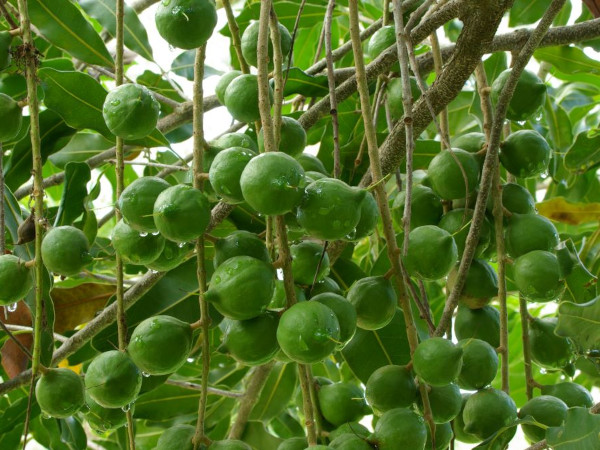

HOW THE OIL IS PRODUCED
The macadamia tree bears fruit during the whole year in several growing stages; at the same time at certain periods of the year, the branches bear light pink-coloured flowers with a delicate perfume. When ripe, the nuts, enveloped in a green, soft husk, fall to the ground. The nuts are collected at designated collection points and the outer husk is removed. When the nuts fall, the kernels are still protected by an incredibly hard shell, before shrinking away from the inside of the shell. That allows the shells to be cracked without damaging the kernel and processed into cold-pressed oil. Pressing produces the vegetable oil.
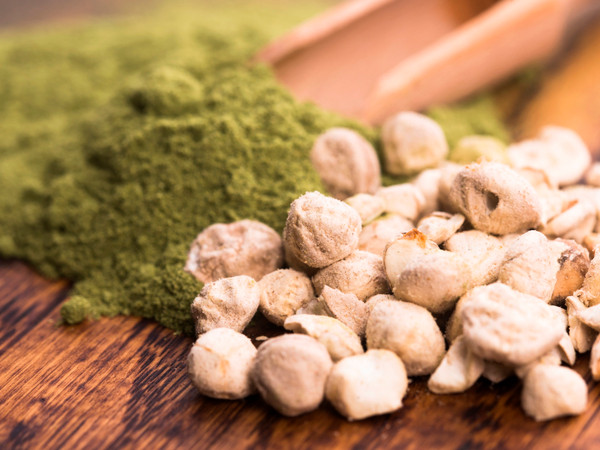

HOW THE OIL IS PRODUCED
The tree Moringa oleifera, a deciduous tree, which grows to around 10 metres in height, produces pendulous pods which contain the seeds. Once they are cleaned and dried, the Moringa Oil is extracted from these de-husked oil-bearing seeds thanks to a cold-process method, before being filtered. The resultant ‘press cake’ is upcycled to be used as a fertilizer and to naturally treat wastewater by enhancing filtration for improved purity.
The oil has a colourless to pale yellow/green color and a characteristic odour. Some wax formations can be seen at room temperature.
Moringa
THE MIRACLE TREE
Many cultures refer to the tree under various synonyms including the Drumstick Tree due to its long slender triangular seedpods, the Horseradish Tree because of the taste of the roots, the Ben Oil Tree due to the high levels of Behenic Acid present in the oil, and even “The Miracle Tree” as the tree is referenced in hundreds of folk medicinal remedies. It is recognized to have a long list of benefits and uses; the leaves are cooked as a vegetable like spinach, whilst its seeds are eaten like peas or roasted, and its roots are added as a condiment with a sharp flavor. Moreover, the oil is pressed from the seeds and the seed cake obtained is a by-product which is used as an organic fertilizer and to naturally filter water.
In Ancient Egypt Moringa Oil had various uses, including the extensive use in pharaonic medicine. Jars of the oil have frequently been found in the tombs which demonstrates its importance, as tombs were filled with items that were deemed valuable to aid the deceased on their journey into the afterlife.
Today, Moringa Oil is either used for cooking, for industrial applications, or as a highly valued ingredient for hair and skin care cosmetic products.
OUR GRADES OF MORINGA OIL
- Moringa Oil Crude
- Moringa Oil Refined
- INCI: Moringa oleifera Seed Oil
USES AND BENEFITS OF MORINGA OIL
Highly appreciated for its multiple benefits, Moringa Oil is widely used in skin and hair care formulations. Fluidic and non-sticky or greasy, this intermediate oil exhibits very good emollient properties, excellent to promote skin nourishment and hair strength. Its very high content in omega 9 (C18:1 Oleic Acid) makes the oil a perfect ally for dry and damaged skin types. The presence of C22 Behenic Acid, a long-chain saturated fatty acid not very common in vegetable oils, gives it the nickname of “Ben Oil” as well as its exceptional properties to sublimate, smooth and protect the hair.
| Fatty acid | Typical value |
| C16 Palmitic Acid | 2-10% |
| C16:1 Palmitoleic Acid | 1-5% |
| C18 Stearic Acid | 2-8% |
| C18:1 Oleic Acid | 65-85% |
| C22 Behenic Acid | 3-8% |
With excellent oxidation stability compared to other carrier oils, it is an ingredient of choice for many cosmetic applications!
Pumpkin Seed Oil
AN OIL RICH IN LINOLEIC ACID
Pumpkin seed oil is made from pumpkin seeds, also known as pepitas. This winter squash is native to America, Canada, and Europe and grown abundantly in India and China. The fleshy shell and the leaves are used as ingredients in a variety of recipes because they are rich in fibre and nutrients.
Pumpkin seed oil has a long history of use in traditional medicine, dating back to the Aztecs. Native American tribes used the oil to treat a range of ailments, including urinary tract infections and kidney problems. Today, pumpkin seed oil is widely used in Europe and other parts of the world for its potential health benefits.
OUR GRADES OF PUMPKIN SEED OIL
-
PUMPKIN SEED OIL CRUDE (Organic)
- INCI: Cucurbita pepo seed oil
USES AND BENEFITS OF PUMPKIN SEED OIL
Pumpkin seed oil is known to be a rich source of antioxidants, vitamins, and minerals. It contains high levels of vitamin E, which is essential for healthy skin and hair.
Pumpkin seed oil is believed to offer a range of health benefits, and is used in a lot of personal care products such as skin care and hair care.
| Fatty acid | Typical value |
| C16 Palmitic Acid | 10-16% |
| C18 Stearic Acid | 2-7% |
| C18:1 Oleic Acid | 18-38% |
| C18:2 Linoleic Acid | 40-65% |


HOW THE OIL IS PRODUCED
The oil is extracted from the seeds using a cold-pressed method in which the oil is mechanically extracted without the use of heat or chemicals. This method helps to preserve the nutritional properties and distinct flavour of the oil.


HOW THE OIL IS PRODUCED
Pomegranate Seed Oil is extracted from its ripe seeds by cold pressing. This method protects the oil from heat and preserves all its qualities as well as its different components.
The resultant crude oil has a yellow colour.
Pomegranate
ANTIOXIDANT RICH SUPER FRUIT
The fruit of the pomegranate, Punica granatum, often referred to as “Nature’s Power Fruit”, symbolises many different legends and mythologies throughout the ages of human civilizations. In many cultures, the fruits have traditionally been associated with representations of ambition, beauty, fertility, abundance, and royalty.
The earliest reference to pomegranate trees dates to 4000 BC where their origin has been traced to the Mediterranean. The trees have also been known to flourish in Southern Europe and in the drier climates of northern Africa and the Middle East. In Ancient Egypt, a high value was placed on pomegranates as they represented a symbol of life after death and were painted on the walls of the pharaoh’s tombs and temples.
The red-purple fruit of the pomegranate contains in its inner part hundreds of seeds. They are used in their raw fruit form for culinary purposes such as in baking or to garnish dishes. They are also found in drinks such as juices and smoothies as well as alcoholic beverages including cocktails and wine. Finally, the seeds are pressed to produce Pomegranate Seed Oil, which is valued as having numerous beneficial properties especially for cosmetic applications.
OUR GRADES OF POMEGRANATE OIL
- Pomegranate Seed Oil Crude (Organic)
- INCI: Punica granatum Seed Oil
USES AND BENEFITS OF POMEGRANATE SEED OIL
Pomegranate Seed Oil exhibits unique characteristics that bring it value. This fluid emollient demonstrates good spreadability and has a better cushion effect (by making a slight pressure between the two fingers, the product spreads and forms a "cushion") than other oils in the portfolio.
The composition of the oil is specific, it contains a high content of the rare Punicic Acid (omega 5), a poly-unsaturated fatty acid close to Linolenic Acid, that provides anti-inflammatory properties. This, coupled with the presence of polyphenols, contributes to antioxidant activity.
| Fatty acid | Typical value |
| C16 Palmitic Acid | 2-6% |
| C18 Stearic Acid | Max 3,5% |
| C18:1 Oleic Acid | 3-11% |
| C18:2 Linoleic Acid | 2-10% |
| C18:3 Punicic Acid | 60-86% |
As a powerful ingredient, Pomegranate Seed Oil imparts calming and soothing benefits, as well as regenerative properties, making it a perfect ally for mature and sensitive skins. It can also be incorporated as an ingredient in restorative treatments for damaged skin or hair.
Sesame
ONE OF THE OLDEST OILSEED CROPS KNOWN
Sesamum indicum is a flowering plant which grows in tropical regions around the world. It is cultivated for its edible seeds, which grow in pods.
Sesame was first cultivated more than 3000 years ago as it thrived in areas that cannot support the growth of other crops. It is a robust plant that needs very little farming support while expanding in drought conditions, where little moisture remains in the soil left behind by monsoons, or excessive heavy rain fall. The crop can even be cultivated at the edge of deserts, where no other crop can grow and therefore is often referred to as the survivor crop.
Sesame seeds were one of the very first crops processed for oil as well as known to be one of the earliest condiments due to its rich, nutty flavour, and has become a common ingredient in cuisines across the world.
Sesame was cultivated during the times of the Indus Valley Civilisation and was the dominant oil crop. There is also evidence that Sesame was cultivated in Egypt during the Ptolemaic period. Egyptians called it Sesemt, and it is in fact listed in various scrolls of Ebers Papyrus dated to be over 3600 years old, where its application is referred to be used as medicine.
Sesame Seed Oil is used today in a variety of Beauty and Personal Care products.
OUR GRADES OF SESAME OIL
- Sesame Seed Oil Crude (Organic)
- Sesame Seed Oil Crude (Fair For Life, Organic)
- INCI: Sesamum indicum Seed Oil
USES AND BENEFITS OF SESAME SEED OIL
Besides the well-recognised use of Sesame Seed Oil in cooking, traditionally this seed oil was used as a healing ointment as it is full of nutrients. It is characterized by a high content of natural sesame oil specific antioxidants such as sesamins and sesamolins, and gamma tocopherol resulting in a high stability of the oil.
Relatively low in saturated fatty acids, Sesame Seed Oil has an excellence balance between mono (omega 9 = C18:1 Oleic Acid) - and poly (omega 6 = C18:2 Linoleic Acid) -unsaturated fatty acids.
| Fatty acid | Typical value |
| C16 Palmitic Acid | 6-15% |
| C18:1 Oleic Acid | 35-50% |
| C18:2 Linoleic Acid | 35-55% |
In our sensory profile study of vegetable oils, Sesame Seed Oil is characterized as:
- fluid oil (when a pressure is exerted, the product will flow)
- very spreadable
- with a good cushion effect (by making a slight pressure between the two fingers,
- the product spreads and forms a "cushion")
- not sticky nor greasy
- good skin penetration
Sesame Seed Oil can be used for multiple applications in Beauty and Personal Care products as natural emollient and carrier oil.


HOW THE OIL IS PRODUCED
Sesame Seed Oil is pressed from the sesame seeds that we are all familiar with.
The Sesamum indicum plant is an herbaceous plant from the Pedaliacea family. Sesame is cultivated in Africa, the middle east and central America. The seeds used for our oil come mainly from Mali in West Africa and Uganda in East Africa, and are grown organically, I.E. no chemical fertilisers or pesticides are used, just environmentally friendly fertilisers, crop rotation and natural pest-management techniques.
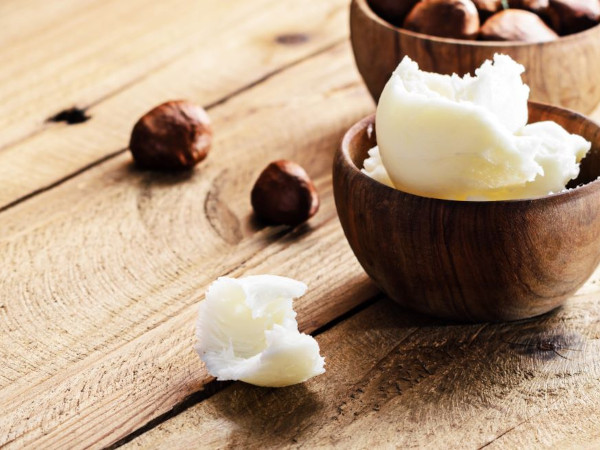

HOW THE BUTTER IS PRODUCED
Shea Butter is produced by removing a fatty extract from the shea nut, which is derived from the shea fruit. Before this step, the pulp has to be removed to gain access to the shea nut. The nuts are removed, washed and left to dry, eliminating the moisture. They are then crushed, roasted and transformed into a dark brown paste. Water is added to the paste and whipped so that it can mix well. The paste is then washed several times with distilled water to purify it, before boiling commences. As the paste is boiled, the fat rises to the top while the impurities settle to the bottom. The fat is skimmed off, mixed for a long time until the water evaporates, leaving only the oil. This oil is filtered, left to cool down and once at room temperature, it recovers its solid and melting texture, hardening into Shea Butter.
Shea Butter
INVALUABLE INGREDIENT DERIVED FROM THE NUTS OF THE KARITE TREE
Native from Africa, Shea Butter’s use can be traced back to ancient times, where it had a variety of uses especially for beauty. In Ancient Egypt, Shea Butter dates to the time of Cleopatra, where it is said she loved and used it for skin and hair care. It is told that the butter was carried in large clay pots to her palace.
Shea Butter comes from a wild-growing African tree, also known as the Shi tree or Vitellaria. Etymologically, the name "Shea" means "the butter tree". The tree can live for up to 300 years. However, it produces its first fruit when it reaches maturity, which can take 20 to 30 years. The shea fruit, a tiny, almond-like fruit with a nut inside, has a nutritious pulp that encompasses the large oil-rich nut, from which Shea Butter is extracted.
Shea Butter is known as “women’s gold” in Africa because it is a valuable source of income for the women, thanks to their precious ancestral and traditional know-how.
OUR GRADES OF SHEA BUTTER
- Shea Butter Refined (Fair For Life, Organic)
- INCI: Butyrospermum parkii Butter
THE WOMEN COOPERATIVES AND FAIR TRADE FUND
Our Fair For Life certified Shea Butter producer employs 35 members of staff and is working with 180 cooperatives of about 20,000 women in Ghana and has now expanded to work with 20,000 others in Burkina Faso. The company helps them organize themselves in cooperatives, pre-finances and accompanies them in the production of a quality hand-crafted butter. It allows all these women to work all year round and earn an income, which enable them for example to send their children, including girls, to school.
All the women are beneficiaries of the Fair Trade fund, which has been used for projects vital to the women, their families and the wider community, including:
- Construction of new processing centers
- Construction of boreholes
- Construction of community household toilet facilities
- Construction of kindergarten block for community
- Purchasing of processing equipment and donation of furniture, roofing sheets and cement to community schools for rehabilitation
- Construction of water tank
- Donation of food items to community orphanage
- Maintenance of energy stoves and painting of processing center
- Construction of underground reservoir
USES AND BENEFITS OF SHEA BUTTER
Slightly colored, Shea Butter is an attractive emollient for many cosmetic applications, including hair and skin care. Solid at room temperature due to its content of saturated fatty acids (C16 Palmitic Acid but mostly C18 Stearic acid), it readily melts at body temperature. According to our sensory profile study of vegetable oils its application brings a good spreadability and a soft, greasy while non sticky after-feel.
The strength of Shea Butter lies in its very high content of unsaponifiables (7 to 10%) and vitamins (A, E and F). Many of its benefits can be attributed to the presence of these unsaponifiables, mostly consisting of triterpene alcohols. They are known to provide anti-inflammatory and antioxidant properties. Shea Butter demonstrates also a high content of omega 9 (C18:1 Oleic Acid) that helps to soften and promote skin elasticity.
| Fatty acid | Typical value |
| C16 Palmitic Acid | 2-7% |
| C18 Stearic Acid | 25-47% |
| C18:1 Oleic Acid | 30-60% |
| C18:2 Linoleic Acid | 2-10% |
Known as a restructurant for damaged skins, Shea Butter can therefore help to combat the signs of ageing, imparting deep skin nourishment, protection and suppleness.
Sweet Almond
ONE OF NATURES MOST VERSATILE OILS
Almonds are a fruit derived from the trees of the botanical species Prunus dulcis. They are said to have been native to the countries of the Middle East, where trade introduced them to the Mediterranean shores and later North Africa and Southern Europe. Eventually they were spread to central and southwest Asia and to the USA in the 1840s.
While generally considered as nuts, almonds are technically a type of stone fruit called a drupe. Drupes are fruits made of an outer hull with a hard shell that contains a seed. Other common drupes include peaches, cherries, apricots and olives. Whereas with other drupes you usually discard the seed, almonds are unique in that the seed is the only edible part of the almond fruit.
The name “Almond” is thought to be a combination from both the old French word “almande” and the Ancient Greek word “amygdala”. Over thousands of years many cultures including the Ancient Chinese and ayurvedic practices have revered the Almond, as a symbol of vigilance and promise due to its early flowering.
Nutritional treasures, considered to be “among the best of fruits”, almonds are full of healthy fats, vitamins and minerals and have been used in confectionary, baked goods, desserts or curries. Today, one of the most popular uses of almond is its oil, which is used in various applications including that of personal care.
OUR GRADES OF SWEET ALMOND OIL
- Sweet Almond Oil Crude (Organic)
- INCI: Prunus amygdalus Dulcis Oil
USES AND BENEFITS OF SWEET ALMOND OIL
Your skin and your hair can benefit from the popular and widely used Sweet Almond Oil. Fluidic and spreadable, not sticky or greasy, this smooth and light oil acts as an emollient and carrier.
It contains more than 80% of unsaturated fatty acids, especially omega 9 (C18:1 Oleic Acid) and omega 6 (C18:2 Linoleic Acid). Oleic Acid, known to be very nourishing for the skin, softens and smooths it. Thanks to the high content of Oleic Acid, a mono-unsaturated fatty acid, Sweet Almond Oil is more resistant to oxidation than other oils that exhibit higher amounts of polyunsaturated fatty acids.
| Fatty acid | Typical value |
| C16 Palmitic Acid | 4-9% |
| C18:1 Oleic Acid | 62-86% |
| C18:2 Linoleic Acid | 15-32% |
Its good occlusive properties enable the oil to act as a moisturising agent by preventing excessive moisture loss through the epidermis. It is also recommended as or in massage oils.
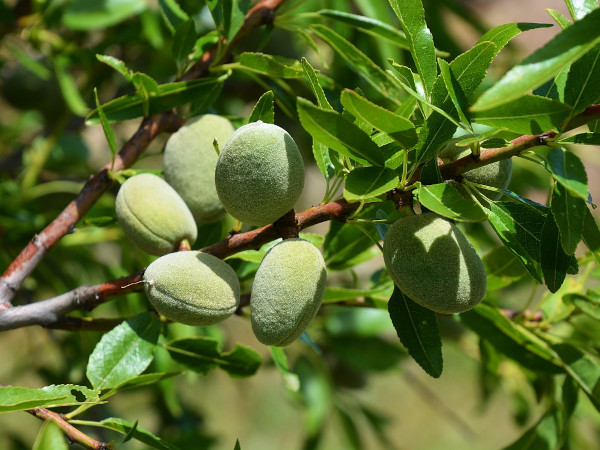

HOW THE OIL IS PRODUCED
Sweet Almond Oil is derived from the ripe seeds of almond fruits by cold pressing, which preserves the oils quality by protecting it from heat. Sometimes the extraction process requires a previous pulverisation of the seeds. Cold pressing involves placing almonds between two rotating metal plates to apply mechanical pressure that will cause them to break and release their oils.
The resulting oil has a pale yellow to yellow / orange colour and a characteristic odour.
| Product Name | Supplier | Package Type | Weight | Price (UOM) | Price (Package) | ||
|---|---|---|---|---|---|---|---|
| BAOBAB OIL ORGANIC ZA 5KG ALUMINIUM SMALL PACK | EARTHOIL - UNIVAR | ALUMINIUM SMALL PACK | 5.00 kgs | -- |
Request Quote
|
-- | |
|
|
|||||||
| AVOCADO OIL REFINED 940KG IBC | EARTHOIL - UNIVAR | IBC | 940.00 kgs | -- |
Request Quote
|
-- | |
|
|
|||||||
| AVOCADO OIL CRUDE FAIR FOR LIFE ORGANIC 25KG PLASTIC JERRYCAN | EARTHOIL - UNIVAR | PLASTIC JERRYCAN | 25.00 kgs | -- |
Request Quote
|
-- | |
|
|
|||||||
| AVOCADO OIL CRUDE ORGANIC 25KG PLASTIC JERRYCAN | EARTHOIL - UNIVAR | PLASTIC JERRYCAN | 25.00 kgs | -- |
Request Quote
|
-- | |
|
|
|||||||
| AVOCADO OIL REFINED ORGANIC 25KG PLASTIC JERRYCAN | EARTHOIL - UNIVAR | PLASTIC JERRYCAN | 25.00 kgs | -- |
Request Quote
|
-- | |
|
|
|||||||
| BAOBAB OIL ORGANIC ZA 25KG PLASTIC JERRYCAN | EARTHOIL - UNIVAR | PLASTIC JERRYCAN | 25.00 kgs | -- |
Request Quote
|
-- | |
|
|
|||||||
| BAOBAB OIL REFINED 25KG PLASTIC JERRYCAN | EARTHOIL - UNIVAR | PLASTIC JERRYCAN | 25.00 kgs | -- |
Request Quote
|
-- | |
|
|
|||||||
| AVOCADO OIL REFINED ORGANIC FAIR FOR LIFE 25KG PLASTIC JERRYCAN | EARTHOIL - UNIVAR | PLASTIC JERRYCAN | 25.00 kgs | -- |
Request Quote
|
-- | |
|
|
|||||||
| ARGAN OIL CRUDE ORGANIC 25KG PLASTIC JERRYCAN | EARTHOIL - UNIVAR | PLASTIC JERRYCAN | 25.00 kgs | -- |
Request Quote
|
-- | |
|
|
|||||||
| AVOCADO OIL REFINED 25KG PLASTIC JERRYCAN | EARTHOIL - UNIVAR | PLASTIC JERRYCAN | 25.00 kgs | -- |
Request Quote
|
-- | |
|
|
|||||||
| APRICOT KERNEL OIL CRUDE ORGANIC 25KG PLASTIC JERRYCAN | EARTHOIL - UNIVAR | PLASTIC JERRYCAN | 25.00 kgs | -- |
Request Quote
|
-- | |
|
|
|||||||
| ARGAN OIL CRUDE FAIR FOR LIFE ORGANIC 25KG PLASTIC JERRYCAN | EARTHOIL - UNIVAR | PLASTIC JERRYCAN | 25.00 kgs | -- |
Request Quote
|
-- | |
|
|
|||||||
| BAOBAB OIL CRUDE 25KG PLASTIC JERRYCAN | EARTHOIL - UNIVAR | PLASTIC JERRYCAN | 25.00 kgs | -- |
Request Quote
|
-- | |
|
|
|||||||
| AVOCADO OIL CRUDE 25KG PLASTIC JERRYCAN | EARTHOIL - UNIVAR | PLASTIC JERRYCAN | 25.00 kgs | -- |
Request Quote
|
-- | |
|
|
|||||||
| BLACK CUMIN OIL CRUDE ORGANIC 25KG PLASTIC JERRYCAN | EARTHOIL - UNIVAR | PLASTIC JERRYCAN | 25.00 kgs | -- |
Request Quote
|
-- | |
|
|
|||||||
| ARGAN OIL CRUDE FAIR FOR LIFE ORGANIC 5KG PLASTIC SMALL PACK | EARTHOIL - UNIVAR | PLASTIC SMALL PACK | 5.00 kgs | -- |
Request Quote
|
-- | |
|
|
|||||||
| ARGAN OIL CRUDE ORGANIC 5KG PLASTIC SMALL PACK | EARTHOIL - UNIVAR | PLASTIC SMALL PACK | 5.00 kgs | -- |
Request Quote
|
-- | |
|
|
|||||||
| APRICOT KERNEL OIL CRUDE ORGANIC 190KG STEEL DRUM | EARTHOIL - UNIVAR | -- | 190.00 kgs | -- |
Request Quote
|
-- | |
|
|
|||||||
| ARGAN OIL CRUDE ORGANIC 190KG STEEL DRUM | EARTHOIL - UNIVAR | -- | 190.00 kgs | -- |
Request Quote
|
-- | |
|
|
|||||||
| AVOCADO OIL CRUDE FAIR FOR LIFE ORGANIC 190KG STEEL DRUM | EARTHOIL - UNIVAR | -- | 190.00 kgs | -- |
Request Quote
|
-- | |
|
|
|||||||
| AVOCADO OIL CRUDE ORGANIC 190KG STEEL DRUM | EARTHOIL - UNIVAR | -- | 190.00 kgs | -- |
Request Quote
|
-- | |
|
|
|||||||
| BAOBAB OIL REFINED 190KG STEEL DRUM | EARTHOIL - UNIVAR | -- | 190.00 kgs | -- |
Request Quote
|
-- | |
|
|
|||||||
| BAOBAB OIL ORGANIC ZA 190KG STEEL DRUM | EARTHOIL - UNIVAR | STEEL DRUM | 190.00 kgs | -- |
Request Quote
|
-- | |
|
|
|||||||
| BORAGE OIL CRUDE ORGANIC 190KG STEEL DRUM | EARTHOIL - UNIVAR | -- | 190.00 kgs | -- |
Request Quote
|
-- | |
|
|
|||||||
| AVOCADO OIL REFINED 180KG STEEL DRUM | EARTHOIL - UNIVAR | -- | 180.00 kgs | -- |
Request Quote
|
-- | |
|
|
|||||||
| AVOCADO OIL REFINED ORGANIC FAIR FOR LIFE 190KG STEEL DRUM | EARTHOIL - UNIVAR | -- | 190.00 kgs | -- |
Request Quote
|
-- | |
|
|
|||||||
| ARGAN OIL CRUDE FAIR FOR LIFE ORGANIC 190KG STEEL DRUM | EARTHOIL - UNIVAR | -- | 190.00 kgs | -- |
Request Quote
|
-- | |
|
|
|||||||
| BLACK CUMIN OIL CRUDE ORGANIC 190KG STEEL DRUM | EARTHOIL - UNIVAR | -- | 190.00 kgs | -- |
Request Quote
|
-- | |
|
|
|||||||
| AVOCADO OIL REFINED ORGANIC 190KG STEEL DRUM | EARTHOIL - UNIVAR | -- | 190.00 kgs | -- |
Request Quote
|
-- | |
|
|
|||||||
| AVOCADO OIL CRUDE 190KG STEEL DRUM | EARTHOIL - UNIVAR | -- | 190.00 kgs | -- |
Request Quote
|
-- | |
|
|
|||||||
| BAOBAB OIL CRUDE 190KG STEEL DRUM | EARTHOIL - UNIVAR | -- | 190.00 kgs | -- |
Request Quote
|
-- | |
|
|
|||||||
| APRICOT KERNEL OIL 190KG STEEL DRUM | EARTHOIL - UNIVAR | -- | 190.00 kgs | -- |
Request Quote
|
-- | |
|
|
|||||||
| ARGAN OIL CRUDE ORGANIC 200KG STEEL DRUM | EARTHOIL - UNIVAR | -- | 200.00 kgs | -- |
Request Quote
|
-- | |
|
|
|||||||
| APRICOT KERNEL OIL 25KG STEEL JERRYCAN | EARTHOIL - UNIVAR | STEEL JERRYCAN | 25.00 kgs | -- |
Request Quote
|
-- | |
|
|
|||||||
| APRICOT KERNEL OIL 50KG STEEL KEG | EARTHOIL - UNIVAR | STEEL KEG | 50.00 kgs | -- |
Request Quote
|
-- | |
|
|
|||||||
| AVOCADO OIL REFINED ORGANIC 200KG STEEL DRUM | EARTHOIL - UNIVAR | STEEL DRUM | 200.00 kgs | -- |
Request Quote
|
-- | |
|
|
|||||||
| AVOCADO OIL CRD FFL ORGANIC FG 190KG STEEL DRUM | EARTHOIL - UNIVAR | STEEL DRUM | 190.00 kgs | -- |
Request Quote
|
-- | |
|
|
|||||||
| ARGAN OIL CRD 200KG STEEL DRUM | EARTHOIL - UNIVAR | STEEL DRUM | 200.00 kgs | -- |
Request Quote
|
-- | |
|
|
|||||||
| ARGAN OIL CRD 25KG PLASTIC JERRYCAN | EARTHOIL - UNIVAR | PLASTIC JERRYCAN | 25.00 kgs | -- |
Request Quote
|
-- | |
|
|
|||||||
| AVOCADO OIL CRD FFL ORGANIC FG 25KG PLASTIC JERRYCAN | EARTHOIL - UNIVAR | PLASTIC JERRYCAN | 25.00 kgs | -- |
Request Quote
|
-- | |
|
|
|||||||
| AVOCADO OIL CRD ORGANIC FG 190KG STEEL DRUM | EARTHOIL - UNIVAR | STEEL DRUM | 190.00 kgs | -- |
Request Quote
|
-- | |
|
|
|||||||
| AVOCADO OIL CRD ORGANIC FG 25KG PLASTIC JERRYCAN | EARTHOIL - UNIVAR | PLASTIC JERRYCAN | 25.00 kgs | -- |
Request Quote
|
-- | |
|
|
|||||||
| AVOCADO OIL REFINED 190KG STEEL DRUM | EARTHOIL - UNIVAR | STEEL DRUM | 190.00 kgs | -- |
Request Quote
|
-- | |
|
|
|||||||
| AVOCADO OIL REFINED 200KG STEEL DRUM | EARTHOIL - UNIVAR | STEEL DRUM | 200.00 kgs | -- |
Request Quote
|
-- | |
|
|
|||||||
| AVOCADO OIL REFINED 28KG PLASTIC JERRYCAN | EARTHOIL - UNIVAR | PLASTIC JERRYCAN | 28.00 kgs | -- |
Request Quote
|
-- | |
|
|
|||||||
| AVOCADO OIL REFINED 950KG IBC | EARTHOIL - UNIVAR | IBC | 950.00 kgs | -- |
Request Quote
|
-- | |
|
|
|||||||
| AVOCADO OIL REFINED ORGANIC 920KG IBC | EARTHOIL - UNIVAR | IBC | 920.00 kgs | -- |
Request Quote
|
-- | |
|
|
|||||||
| BAOBAB OIL ORGANIC ZA 191KG STEEL DRUM | EARTHOIL - UNIVAR | STEEL DRUM | 191.00 kgs | -- |
Request Quote
|
-- | |
|
|
|||||||
| BAOBAB OIL ORGANIC ZA 200KG STEEL DRUM | EARTHOIL - UNIVAR | STEEL DRUM | 200.00 kgs | -- |
Request Quote
|
-- | |
|
|
|||||||
| ARGAN OIL DEODORIZED ORGANIC 25KG PLASTIC JERRYCAN | EARTHOIL - UNIVAR | PLASTIC JERRYCAN | 25.00 kgs | -- |
Request Quote
|
-- | |
|
|
|||||||
Get in touch, 24 hours a day, 7 days a week.


